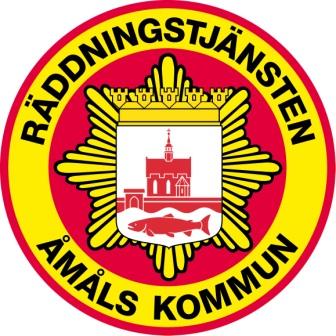METADATA STATEMENT DEPARTMENT OF PRIMARY INDUSTRIES AND REGIONAL
1 CHANGING UPDATING AND CHECKING METADATA WITH XML4 CHOOSING A METADATA STANDARD FOR YOUR DIGITAL PROJECT
8 DEVELOPING A METADATA ELEMENT SET OR APPLICATION PROFILE
A MODEL FOR STRUCTURING OF STATISTICAL DATA AND METADATA
A PRIMER ON METADATA FOR LEARNING OBJECTS RORY
AC ADMINISTRATIVE COMPONENTS DUBLIN CORE DCMI ADMINISTRATIVE METADATA
NLWRA Vegetation Theme Metadata
Metadata Statement
Department of Primary Industries and Regional Development (DPIRD-023)
Title: National Conservation Lands Dataset Project: Western Australia
Job Number: 2010202
Custodian: Department of Primary Industries and Regional Development (DPIRD)
Jurisdiction: Western Australia
Abstract: This project consolidated both historical and current (to 2015) records relating to the following agreements currently managed by the Department of Agriculture and Food Western Australia (DAFWA), or where agreements formerly administered by DAFWA established covenants that are still current:
1) Agreements to Reserve (ATR): Agreement with landholders through which geographic areas – often incorporating native vegetation - are set-aside for the preservation of native vegetation. These agreements may established to off-set neighbouring areas approved for clearing or modification, as a result of sub-division processes or other regulatory processes, or voluntarily set aside by landholders. Agreements are registered on title, mostly 30 year set-term, some in perpetuity. Some 2,500 agreements have been established since the early 1990’s, with 10-15 new agreements currently established each year.
2) Conservation Covenants established through the Remnant Vegetation Protection Scheme (RVPS). Covenants were established through this program between 1988 and 2000 for the voluntary protection and/or management of native vegetation by landholders – in return for a grant towards the costs of installing fencing around areas protected under this initiative. Covenants are recorded on title - often as a 30 year set-term covenant, although a number of in-perpetuity covenants were also established. In some cases the original covenants been converted to in-perpetuity covenants with assistance from Department of Environment and Conservation or NGOs such as the World Wildlife Fund for Nature and Greening Australia.
Funding was sought through the National Conservation Lands Database Project to engage additional resources to assist Department staff to collate these data, and to capture these data in the required format. The opportunity was also be taken to ensure that data on any future conservation agreements established can be readily captured in the same format for registering with the National Conservation Lands Database.
Search Words: LAND Management, VEGETATION Protection, VEGETATION Native
Geographic Extent: Western Australia
Beginning Date: 1990
Ending Date: Current
Progress: Ongoing
Maintenance and Update Frequency: As required.
Stored Data Formats: Oracle Spatial database
Available Data Formats: ESRI shapefile
Access Constraint: Permission from the Office of the Soil Commisioner
Lineage:
The majority of data relating to these programs was captured between 1990 and 2000 and stored in CAD format (MicroStation) files which had been archived. In some cases information was only recorded in paper-based records. Data has been consolidated through this project and output to DAFWA GIS Oracle Spatial database.
Positional Accuracy: ~ + or – 200 m. Data has been captured using a range of methods, formats and projections over a considerable period of time. The location and shape of some polygons may not be exact.
Completeness:
Complete as at December 2010.
Supplemental Information:
Database Fields:
|
Reference |
Field name and type |
Definition |
|
Agreement Identifier |
||
|
1.3 |
SOURCE_ID Text 20 |
Identifier allocated from the source data base that uniquely defines each agreement. This is the field that is used to link the agreement polygon data in the feature class to this text table. |
|
Spatial information |
||
|
2.2 |
GAZ_AREA Double or numeric field with the appropriate number of decimal places |
Legal area of the agreement in hectares. This field and the definition above were adopted to be consistent with the CAPAD standard. The value in this field is meant to represent the official area of the agreement, as given in the agreement document. In the Stage 1 national database the values in this field represented the agreement area value quoted by the data provider in published statistics. It therefore became a mixture of area from the GIS and area from agreement documents depending on the reporting policy of the data provider. DEWHA will use the GIS area Table 2 field 2.1) calculated from the national layer for most reports from the national database. |
|
2.4 |
STATE Text 3 |
State or territory where the parcel is located. Set codes or values below. |
|
2.8
|
CONS_AREA Double or numeric field with the appropriate number of decimal places |
Area of the ‘high conservation value’ part of the agreement. For mechanisms that only gazette / apply to the high conservation value part of a property, the CONS_AREA will be the same as the GAZ_AREA. For mechanisms that gazette / apply to an entire property, or include other areas that are considered of high conservation value, the CONS_AREA value will be smaller than the GAZ_AREA value. This field will enable greater consistency when reporting on agreements at a national scale by bringing the area statistics of agreements that include zones in line with agreements that only gazette/map the high conservation value area. Agreements with zones include zones that although they restrict activities, they do not offer the highest level of protection in the agreement, for example ‘farmland’ and ‘domestic’. Values for CONS_AREA can be obtained from formal agreement documents or calculated using GIS. |
|
Nature of the agreement |
||
|
3.1 |
TYPE |
Type of agreement, for example Conservation Agreement, Heritage Agreement and Nature Refuge Declaration. Set codes or values below. |
|
3.2 |
DURATION |
The duration of the agreement. Values: In perpetuity; Set term; Unspecified term. In perpetuity includes only agreements that are registered without an end date to the agreement. This does not include agreements which have a long term-based agreement (e.g. 99 years), which is often the case for leasehold land. Unspecified term could apply to a revolving fund property awaiting sale to register agreement, or agreement does not have set term. |
|
3.3 |
TERM Or numeric field |
Number of years that the mechanism will be in place. Where there is no value for instance for in perpetuity agreements, then set to NULL |
|
3.4 |
ON_TITLE |
Registered on title. Values Y/N |
|
3.5 |
GAZ_DATE or Text if not available |
The date the agreement commenced. When term based, the date the agreement commenced the term. The CAPAD definition “Gazettal date of the original proclamation that established any form of protected area that included this land”. In many jurisdictions systems this translates to the date the agreement was registered. If a text field is used the data should be in the format YYYY-MM-DD or DD-MM-YYYY and can have “/” as the separator instead of “-“. |
|
3.6 |
NRS_PA |
Abbreviation of whether the protected area meets the requirements agreed by the NRS Task Group as being part of the national reserve system, or is otherwise best considered part of complementary protection mechanisms.
Values: Y (Yes); N (No); I (Interim); ND (Not Determined or Not Provided). See below for guidelines on determining NRS_PA. |
|
3.7
|
REV_FUND Text 2 |
This field will streamline reporting to the Australian Government. Indicates whether the property has been through a revolving fund program. This includes properties which have been purchased and are currently awaiting sale and gazettal – these should be coded as ‘Awaiting Sale’ (AS). Those that have already gone through the revolving fund process, ie have been purchased and on-sold with an agreement in place should be coded as ‘Yes’ (Y).
Values: Y (Yes); N (No); AS (Awaiting Sale). |
|
Governance |
||
|
4.1 |
AUTHORITY |
The authority which administers the agreement. Set values are described below for those who were involved in Stage 1 and as a guide for new contributors. |
|
4.2 |
GOVERNANCE |
The code for the type of governance which has the management and decision making authority (Codes: Government, Private, Community, Joint). These codes are described below. |
|
4.3 |
LEGISLATION |
This contains the name of the act under which the agreement was established. For example Victorian Conservation Trust Act 1972 (s3A), Native Vegetation Act 1991 and Nature Conservation Act 1992. Set values are below those who were involved in Stage 1 and as a guide for new contributors. |
|
Management |
||
|
5.1 |
MGMT_PLANNING
|
Is there a management plan (in any form) or agreed approach to management actions for the agreement either in place or in preparation. Values: Y/N/ND (Not Determined or Not Provided). |
|
5.2 |
ACTIVE_MGMT
|
Is a management plan being implemented and/or other management actions occurring on the agreement. This may be consistent with required management actions or beyond such requirements in order to maintain or improve values of the area. Values Y/N/ND (Not Determined or Not Provided). |
|
5.3 |
MONITORING |
Is active monitoring being implemented (this includes but is not limited to stewardship programs whereby program staff visit the site at established intervals). Values: Y/N/ND (Not Determined or Not Provided). |
|
Site significance |
||
|
6.1 |
IUCN |
The IUCN protected area category ascribed by the managing authority. This field confirms basis of significance of the site, as well as describing the intent / purpose of the agreement. Set values are defined below. Set values are: IA, IB, II, III, IV, V, VI, VOID, Not applicable, Not Determined (includes Not Provided) For an explanation of the codes see the set values section below. |
|
6.2 |
PLACE_BASED VALUES The following fields describe the values that are known to exist in the agreement from a place based perspective. |
|
|
6.2a |
THREAT_SPP_HABITAT
|
Agreement is known to contain listed* species (flora or fauna), AND/OR contains the habitat for a listed species, AND/OR contains a listed* ecological community. *Listed includes local, state and national level listings (all categories e.g. conservation dependent, vulnerable, endangered, critically endangered).
Values Y/N/ND (Not Determined or Not Provided) - Blank fields should be 'ND'. |
|
6.2b |
AQUATIC_ECOSYSTEMS
|
The agreement is known to contain high quality aquatic ecosystems. This includes but is NOT limited to wetlands of national / international significance. Significant sites are listed at: Ramsar, DIWA: http://www.environment.gov.au/water/publications/environmental/wetlands/database/index.html HCVAE: criteria and nominated sites pending 2010.
Values Y/N/ND (Not Determined or Not Provided) - Blank fields should be 'ND'. |
|
6.2c |
ECOSYSTEM_SERVICES
|
The agreement is known to provide ecosystem services and/or have intact native vegetation: protection of ecosystem services/function: water conservation, air quality, soil conservation; good quality native vegetation
Values Y/N/ND (Not Determined or Not Provided) - Blank fields should be 'ND'. |
|
6.2d |
BIODIVERSITY
|
The agreement is known to contain high species richness and/or high levels of localised endemism.
Values Y/N/ND (Not Determined or Not Provided) - Blank fields should be 'ND'. |
|
6.2e |
CULTURAL
|
The agreement has known cultural heritage values (this includes but is NOT limited to listed heritage sites).
Values Y/N/ND (Not Determined or Not Provided) - Blank fields should be 'ND'. |
|
6.2f |
GEOLOGIAL |
The agreement has known high geodiversity or an outstanding geological formation (e.g. caves, gorges, crater lakes).
Values Y/N/ND (Not Determined or Not Provided) - Blank fields should be 'ND'. |
|
6.3 |
LANDSCAPE_SCALE VALUES The following fields describe the landscape scale function associated with agreement. |
|
|
6.3a |
CONNECTIVITY
|
Connectivity is the degree to which core habitat areas are linked. An agreement with connectivity values is one which facilitates movement of species between resource patches – that is, increases the connection between core patches of native vegetation in the landscape. In this case it applies to the spatial structure of a landscape, and can be determined from map elements.
In general, an agreement will have a connectivity value if it is connected to (or is within reasonable distance to) another area(s) of native vegetation. This may be as part of a corridor (narrow strip of vegetation) or connecting to a larger block of vegetation (refuge). It also includes agreements that act as ‘buffers’ around a core habitat area such as a National Park or Wilderness Area.
Connectivity is determined regardless of the tenure / protection of the adjoining vegetation.
If an agreement is connected to roadside corridors and narrow plantations of trees, determining whether it has a connectivity value will be based on whether the vegetation is native and is of sufficient quality to enable to effectively act as a ‘corridor’. (This will be a subjective consideration using your knowledge of the region and species present.)
Values Y/N/ND (Not Determined or Not Provided) Note blank fields should be ‘ND’ |
|
6.3b |
RESILIENCE |
‘Resilience’ of an ecosystem refers to its capacity to adapt to changes and disturbances, yet retain its basic functions and structures. Does the area contribute to or influence broader scale socio-ecological processes, does the area maintain or improve the resilience of biodiversity and natural resources within the bioregional / landscape context.
Values Y/N/ND (Not Determined or Not Provided) Note blank fields should be ‘ND’ |
|
6.3d |
RESTORE_POT |
Restoration potential / future value. Contains area requiring restoration with potential future ecological value at site / landscape / regional scale. Links to and /or includes integrated management with other surrounding land owners / managers.
Values Y/N/ND (Not Determined or Not Provided) Note blank fields should be ‘ND’ |
|
Representativeness |
||
|
6.5a |
UNDER_REP_STATE |
The agreement contains ecological communities or ecosystems that are under-represented at the state level in existing reserve system. Clear explanation of the relevant criteria used to determine this field should be provided with the metadata.
Values Y/N/ND (Not Determined or Not Provided) Note blank fields should be ‘ND’ |
Contact Organisation: Geographic Information Services
Department of Primary Industries and Regional Development
Mail Address: Locked Bag 4
Locality: Bentley Delivery Centre
State: Western Australia
Country: AUSTRALIA
Postcode: 6983
Telephone: (08) 9368 3728
Email Address: [email protected]
Metadata Date: 25th September 2014
ANNEX I CLC2000 METADATA – COUNTRY LEVEL
anzlic_metadata_profile_v1_1
BEST PRACTICES METADATA DAVID DARST DIRECTOR DIGITAL ASSET MANAGEMENT
Tags: department of, services department, primary, regional, department, metadata, statement, industries
- GROUPE INTERNATIONAL DE RECHERCHES BALZACIENNES COLLECTION BALZAC BALZAC
- 6 WZORCOWY REGULAMIN PRACY KOMISJI REWIZYJNEJ OCHOTNICZEJ STRAŻY
- PROGRAMA DE LA LIGA SPARTAKUS Y OTROS ESCRITOS PROGRAMA
- KOMUNIKASI FPSB UII LAUNCHING BUKU MEDIA DAN KOMUNIKASI POLITIK
- SOCIAL EMOTIONAL AND BEHAVIOURAL DIFFICULTIES IN NEW ZEALAND CHILDREN
- OBRAZEC 12 (2020) IZJAVA O OBSTOJEČEM PREMOŽENJU IN NAJEMU
- 5 PATVIRTINTA LIETUVOS RESPUBLIKOS KULTŪROS MINISTRĖS 2017 M D
- PROGRAM ELIGIBILITY REQUIREMENTS TENANT RENT PAYMENT PREFERENCES PUBLIC HOUSING
- NOTES TAKEN BY MICHAEL WHITE (MIKEWCCUSUEDU 4357607452) FOR THE
- EL CONTRATO DE IMPLANTACIÓN DE PROGRAMAS INFORMÁTICOS O SOFTWARE
- SECTION 3 ACKNOWLEDGEMENT OF RECEIPT TO BE COMPLETED BY
- XXII ESCUELA SUPERIOR POLITÉCNICA DEL LITORAL FACULTAD DE INGENIERÍA
- PRESCHOOL MATH SKILLS CATEGORY 0 1 2 3 4
- LIBRO DE CARRERA INGENIERÍA CIVIL INDUSTRIAL SEDE COQUIMBO 2015
- PAUTA ACTIVIDAD MERCANTILISMO Y EL ESTADO OBSERVE ATENTAMENTE EL
- SMART GOAL WORKSHEET SCHOOL TEAM NAME TEAM LEADER TEAM
- INSTALACIÓN DE LA TARJETA PCMCIA UMTSGPRS INSERTE EL
- ALLEGATO B MODELLO DI FORMULARIO PER IL DOCUMENTO
- NATIONAL CARBON OFFSET STANDARD FOR EVENTS CARBON NEUTRAL PROGRAM
- Scenariusz Zajęć z Edukacji Wczesnoszkolnej z Wykorzystaniem Tablicy Interaktywnej
- DEUXIÈME PARTIE – LE CŒUR DE LA MODERNITÉ SOCIALE
- A BYLAW TO LICENSE AND REGULATE THE RUNNING AT
- BAZTANGO UDALEKO ALKATEUDALBURU JAUN ARGIGARRIARI MI SR ALCALDEPRESIDENTE DEL
- CONSEJERÍA DE EDUCACIÓN FORMACIÓN Y EMPLEO PROGRAMACIÓN
- UNIT 1 NAME CLASS DATE RECUPERO
- UNPUBLISHED LECTURE TRANSCRIPT DO NOT CITE WITHOUT PERMISSION WHY
- SERVICIO DE SELECCIÓN Y FORMACIÓN SELECCIÓN Y PROVISIÓN PAS
- W ODPOWIEDZI NA POWSTAŁE NIEŚCISŁOŚCI W PROGNOZIE I PROGRAMIE
- AUTORIZUJÍCÍ ORGÁN MINISTERSTVO MÍSTO PRO OTISK PODACÍHO RAZÍTKA MÍSTO
- 20…20… EĞİTİM ÖĞRETİM YILI ………………………ORTAOKULU 8 SINIF 1DÖNEM 1
 SERVICIO DE CALIDAD UCAV ANEXO 12 INFORME TÉCNICO DE
SERVICIO DE CALIDAD UCAV ANEXO 12 INFORME TÉCNICO DE DIARIENR (FYLLS I AV MOTTAGANDE KOMMUN) 10 EXPLOSIVA VAROR
DIARIENR (FYLLS I AV MOTTAGANDE KOMMUN) 10 EXPLOSIVA VARORCONFERENCIA SOBRE LOS DERECHOS DE LA MUJER CON MOTIVO
APSTIPRINĀTS ZILUPES NOVADA PAŠVALDĪBAS IEPIRKUMU KOMISIJAS 2016GADA 30 MAIJA
 CALLITHRIX JACCHUS UNA ALTERNATIVA PARA EL ESTUDIO DE GENOTÓXICOS
CALLITHRIX JACCHUS UNA ALTERNATIVA PARA EL ESTUDIO DE GENOTÓXICOSEtutoring Rubric (structure and Headings are From Preparing Educators
CLASE 3 4 CÁNDIDO MONZÓN ARRIBAS “ESTUDIOS SOBRE LA
BALTIC FISHERMEN’S ASSOCIATION STATEMENT ON THE EU COMMISSION’S
NATIONAL LIBRARY CAMP FEASIBILITY STUDY ALA EMERGING LEADERS 2007
SPECIJALNA BOLNICA »SVETI SAVA« ETIČKI ODBOR BEOGRAD NEMANJINA 2
 THE STATE EDUCATION DEPARTMENT THE UNIVERSITY OF THE STATE
THE STATE EDUCATION DEPARTMENT THE UNIVERSITY OF THE STATE5 TEMMUZ 2008 CUMARTESİ RESMÎ GAZETE SAYI 26927
FEDERICO LUQUE EXPERIENCIA PROFESIONAL 1996 ACTOR DE REPARTO
KMS NOVEMBER 2011 MIA VERSION 3037 RELEASENOTE XML
 DESET ZAPOVIJEDI – PRAVILA ZA ŽIVOT U LJUBAVI I
DESET ZAPOVIJEDI – PRAVILA ZA ŽIVOT U LJUBAVI IPERO ESE RUIDO BLANCO ¡ES UNA ALARMA A MIS
 I NSTRUCTIVO DE TRABAJO DE OPERATIVA DE BOMBAS KSB
I NSTRUCTIVO DE TRABAJO DE OPERATIVA DE BOMBAS KSB IES LLUIS SIMARROCURSO 201415 HISTORIA DEL ARTE 2º BAH
IES LLUIS SIMARROCURSO 201415 HISTORIA DEL ARTE 2º BAHRADZANOWO DNIA … (DATA) … (IMIĘ I NAZWISKO LUB
 INTEGRATED MANAGEMENT OF CHILDHOOD ILLNESS IDENTIFY TREATMENT WORLD HEALTH
INTEGRATED MANAGEMENT OF CHILDHOOD ILLNESS IDENTIFY TREATMENT WORLD HEALTH